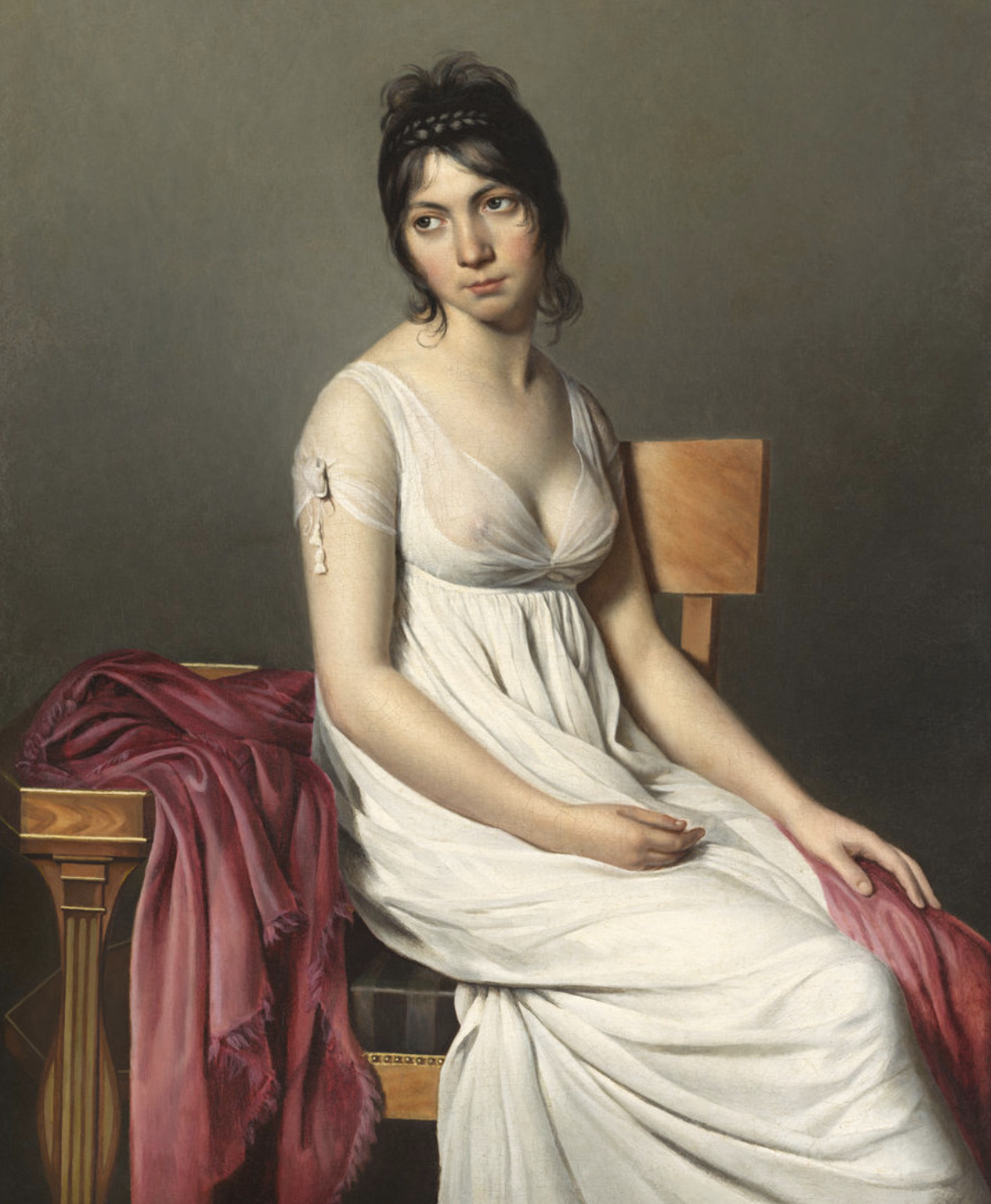I'm sure it's no surprise to anyone who reads my books that I enjoy writing about the fashions of the past. It’s not only a way to dress vicariously through my characters (though this is important, given that writers whilst writing are inveterate slobs), but it’s also a great way to show the passage of time within a story. I had particular fun writing about the women’s clothing in I, Eliza Hamilton. The story covers about thirty years, from 1777 to 1804, and what a period for fashion!
As a wealthy young woman and then the wife of a prominent lawyer and statesman, my heroine Eliza's wardrobe follows the styles of the day, from dresses worn over whalebone-stiffened stays and hoops with powdered hair in the 1770s to the airy high-waisted dresses of the early 19thc. It must have been quite an evolution, but it was also one that she embraced. As her much-more-fashionable sister Angelica Schuyler Church wrote to close a letter in 1794: "Adieu my dear Sister yours with all my heart. Remember that your waist must be short, your petticoats long, your headdress moderately high, and altogether a la Grec...." Words to live by, indeed.
But not all American women (or statesmen's wives) were so eager to follow the latest trends. In 1800, Abigail Smith Adams was the First Lady, with her husband John serving the final year of his term as president in the then-capitol of Philadelphia. Ladies there were quick to follow the latest fashions from Paris, but Abigail was having none of it. She had recently read an article (probably something of a sermon) by a lay preacher who "thinks there are some Ladies in this city, who stand in need of admonition, and I fully agree with him." Does she ever! Here's more of her commentary in a letter written over several days (15-18 March, 1800) to her sister Mary Smith Cranch:
"The Stile of Dress...is really an outrage upon all decency. I will describe it as it has appeared even at the drawing Room - a Sattin petticoat of certainly not more than three breadths gored at the top, nothing beneath but a chimise over this thin coat, of muslin...made so strait before as perfectly to show the whole form, the arms naked almost to the shoulder and without stays or Bodice...and the "rich Luxurience of naturs Charms" without a handkerchief fully displayed...when this Lady has been led up to make her curtzey, which she does most gracefully it is true, every Eye in the Room has been fixed upon her and you might litterally see through her....[Most of the other ladies also] wear their Cloaths too scant upon the body, and too full upon the Bosom for my fancy, not content with the Show which nature bestows, they borrow from art, and litterally look like Nursing Mothers....The Lady described & her Sister, being fine women and in the first Rank, are leaders of the fashion, but they Show more of the [word illegible] than the decent Matron or the modest woman." *
In fairness to Abigail, there's probably more going on here than fashion alone. This era marked the beginning of the two-party system in American politics. Her husband John Adams was a Federalist; the opposing party, led by Thomas Jefferson, was the Democratic-Republican Party. One of the issues dividing the two parties was the French Revolution. The Federalists abhorred the violence, chaos, and breakdown of traditional government of the Terror, while the Democratic-Republicans believed the Jacobins were simply following the precedent of the American Revolution, and the bloodshed of the guillotine was unfortunate but necessary. At the time, America was also engaged in an undeclared naval war with France, the aptly-named Quasi-War.
The unstructured, classically inspired fashions from Paris might be the latest style, but to Abigail they likely were also the clothes of the Jacobins and the French Revolution. This was a political fashion statement that she'd no wish to approve, let alone wear herself. (Her portrait from about this time is right: still stylishly dressed, and entirely appropriate for a Federalist president’s wife in her fifties.)
It's also difficult to know exactly how far the American ladies were willing to follow the French. The English fashion plate for April 1800, right, seems modest enough, and so does the portrait, lower left, of Mrs. Harrison Gray Otis (Sally Foster), whose husband was a Federalist congressman. But then there's this portrait, upper left, of a now-unknown French woman dressed in the most extreme (and extremely revealing) version of the style. One can only imagine what Abigail would have to say about her!
* Abigail Adams, “15 March 1800 to 18 March 1800,” Illustrated inventory of Abigail Adams' letters, American Antiquarian Society. If you wish to read the entire letter in Abigail’s emphatic handwriting, the original is digitized here. Many thanks to Sara Georgini, Historian & Series Editor, Adams Papers, Massachusetts Historical Society, for helping me locate this quotation.
Above left: Detail, Portrait of a Young Woman in White by Circle of Jacques-Louis David, c1798, National Gallery of Art.
Right: Full Dress for April, 1800, anonymous fashion plate.
Lower left: Detail, Mrs. Harrison Gray Otis (Sally Foster) by Gilbert Stuart, c1805, Reynolda House Museum of Art.
Lower right: Abigail Smith Adams (Mrs. John Adams) by Gilbert Stuart, c1800, National Gallery of Art, Washington, DC.
Read more about Elizabeth Schuyler Hamilton in my historical novel, I, Eliza Hamilton. My latest novel, The Secret Wife of Aaron Burr, is now available everywhere. Order here.




